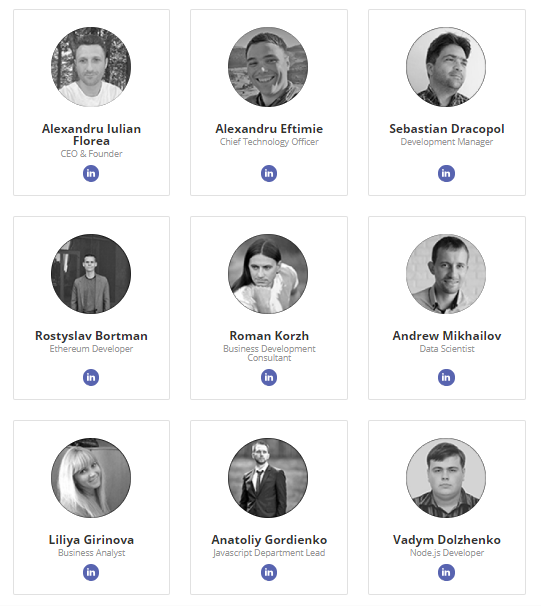Review Part 3 Online.io
Blockchain
current and future evolution
Each distributed system
needs a consensus algorithm to validate transactions. Over the last few years
the Proof-of-Work algorithm has dominated, not to say was the only one used. As
the cryptocurrency ecosystem evolves — the race to create a better consensus
algorithm began.
The current year can
become the year of competition between different mining algorithms /
strategies. The following strategies are currently most widely known:
Proof-of-work
(PoW) - (Reference #2). Coins are distributed based on the
work performed by the user to demonstrate his input on processing transactions
and doing work for the whole infrastructure. This is the group of algorithms
that provides slow calculation of some result and fast verification of this
result. This helps to ensure that miners have to perform some complex
computations on their hardware to find a block, but Blockchain network users
that confirm this block don’t need to perform such computations and can easily
check that result is correct using low resources.
Proof-of-stake
(PoS) – (Reference #3). Coins are distributed based on the
user’s previous investments. The more investments a user has the more coins he
will receive.
Proof-of-elapsed
time (PoET) - (Reference #4) is a relatively new
concept. Coins are distributed based on the proof that the user was doing some
specific action for a rather long period of real time. Proof of time algorithm was
invented by Intel and it is mainly associated with their hardware platform that
provides very fast consensus model. It generates random numbers (wait time) on
miner’s nodes and then chooses the node with the lowest number. So, it works
like a lottery but with more complex algorithm designed to provide more
optimizations. Intel promises that this algorithm cannot be broken by external
actions and provides honest consensus model. This makes PoET perfect for
private Blockchain when you need performant distributed storage and don’t want
to force your hardware to make complex computations. The only minus is the
restriction on Intel’s platform (Sawtooth Lake).
The proof-of-elapsed time
has not become popular and well adopted yet. But in the near future it may be
intensively developed. Future adoptions may not be the exact algorithm designed
by Intel, but rather some variations of the concept.
Online.io
platform
Context Overview
A malicious software is
an application that was created for a particular bad purpose. Most existing
applications are created for normal purposes while some applications have
hidden features which are not doing what is expected, but in fact their purpose
is to find, steal or destroy files, track any data or just annoy the user. This
started a long time ago: the first computer virus was called Elk Cloner and was
first found on a Mac in 1982. Over 10 years ago a new kind of malware appeared
and it was called Adware. It was distributed through security holes in Windows
XP and Internet Explorer. Adware can also use security holes in Java and Flash
player or even in JavaScript. But why do developers create adware? The main
reason is monetization, of course. Any Adware capable of embedding paid
advertisements brings its owners huge income. Starting from pop-up ads,
embedded browser toolbars, search hijacking, etc.
How can we stop any kinds
of malware from being created? We can stop / alter monetization and make
creating malware less attractive!
Roadmap Online.io
2017
The idea first appeared
in June
June to December: Initial
research phase
December: Validating
potential ideas
2018
1st quarter
January
Studying blockchain in
terms of platform integration perspective
Risk analysis, associated
with blockchain
Start development for TGE
Site & Platform
February
The second phase of the
research is completed
March
White paper published
Development completed to
test the network and the basic contract code
Development completed for
user API
Development begins for
data collection and financial officers
Smart contract
development begins
UI design is complete
Personal TGE sales begin
The beta version of the
TGE platform
2nd quarter
April
The TGE platform issued
receives user registration
Development of malware
protection begins
User validation development
begins
The development of online
time tracking is complete
Maybe
Development of Chrome and
Firefox browser extensions starts
The web dashboard for OIO
token owner development begins
ICE token distribution
distribution algorithm is implemented
June
TGE begins
Beta malware protection
User validation beta
Private Beta Cloud,
Guardian script beta
Wallet development begins
3rd Quarter
July
Chrome and Firefox
browser extensions are beta
ICE smart token contract
issued
Web dashboard for OIO
token owner release
Private cloud exemption
Released script guardian
August
Beta version of the web
dashboard for OIO token owner release
Chrome and Firefox
browser extensions released
September
Beta Wallet release
4th Quarter
October
Web dashboard for OIO
token owner release
December
Mobile app development
begins
2019
1st quarter
January
Market architecture
SDK API for custom
integration architecture
February
Plug-in for E-Commerce
solution architecture
March
API SDK for special
integration release
Wallet additional
security features
2nd quarter
April
-Black
Marketplace launch
June
-Plug-in for beta release
of E-Commerce solution
3rd Quarter of
July
-Republik
4th Quarter of
October
TEAM
More Information :
Website : https://online.io/
Profil Bitcointalk : https://bitcointalk.org/index.php?action=profile;u=2271545;sa=summary


Komentar
Posting Komentar